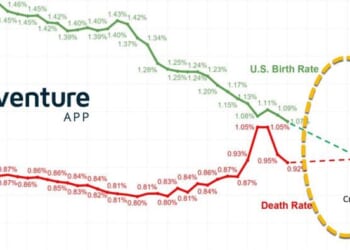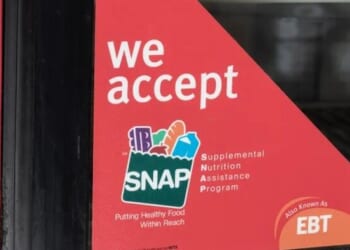Rising food chain prices tend to dominate the news cycle these days as an indicator of overall inflation in the US, but less attention is paid to the damage these prices do to the businesses involved. Revenues losses and location closures for these chains are ugly, to say the least, but what kind of bloodletting are we talking about here?
It should be noted that chain restaurants are a mainstay of the American diet. Around 35% of Americans eat out at chains at least twice a week, but inflation in menu prices is around double that of grocery food items and staying at home has become a necessity for many US families on a budget.
From 2019 to 2025, menu prices have increased by 30% to 80% depending on the company and the items. McDonalds, for example, has seen prices spike by 40% on average since 2019, while sit down restaurants like Waffle House and IHOP are struggling with price jumps as high as 80% in the same time period.
Popular burrito chain Chipotle has increased prices by 70% in the last five years, and the company has made headlines after their stock crashed 21% in the past week.
Wingstop has been hit hard with shares down 26.1% over the past year and 13.9% in October.
Shake Shack stock is down 20.4% from a year ago.
But stock losses are only the beginning. At least 15 major chains have filed for bankruptcy in 2025. There has been a 50% surge in restaurant bankruptcies (including independent restaurants) from 2024 to 2025. Dining establishments account for 12% of all bankruptcies in 2025.
Some of the biggest revenues losers include from this year include:
KFC with an estimated $250 million in losses.
Chipotle with $150 million in losses.
Popeyes with a $91 million net income drop.
TGI Fridays has $100 million in losses amid ongoing bankruptcy.
Hooters has up to $80 million in sales losses amid Chapter 11 filing.
Denny’s with $40 million in losses.
Papa Johns with $30 million in losses.
Subway and Hardees are looking at $10 million to $15 million in losses as well as a widespread location closures.
A number of chains are closing up locations at a swift pace and there doesn’t seem to be any end in sight for the ongoing negative effects of covid era inflation.
Burger King has lost four major operators and is closing around 377 units.
Denny’s with 90 locations.
TGI Fridays with 100 locations.
Jack in the Box with 120 locations.
Applebee’s with 30 locations.
Hardees is closing 145 locations.
Wendy’s is closing 72 locations.
Popeyes is closing up to 30 locations.
Up to 20,000 job losses are expected from restaurant closures in 2025, though these numbers do not account for the number of businesses leaving states like California after they instituted their $20 per hour minimum wage law for fast food workers.
The persistent inflation pressures in food markets over the last five years is becoming a central point of contention for Americans on both sides of the political aisle. It’s one of the few things that the political left and conservatives agree on as a top priority for government intervention. No one agrees on the nature of that intervention, however.
Democrats have suggested government subsidized (or owned) grocery stores with price controls. Such stores have been tried in cities like Kansas City and failed miserably, but candidates like Zohran Mamdani claims that he can make them work in New York (it will be a disaster). Price controls on food invariably lead to a collapse in food production as farmers and manufacturers lose profit incentives. This causes food shortages, and even more price inflation.
Conservatives are more inclined to target the source of the problem, namely the Federal Reserve and its fiat printing operations to support government spending. But some argue that the damage has already been done. Auditing the Fed or shutting it down at this stage would merely act as a post-mortem on an economic murder that was committed years ago.
Furthermore, the ongoing government shutdown proves that cutting almost anything from the budget is nearly impossible (even healthcare subsidies for illegals). Achieving a consensus will be an impossible feat.
If there is a solution at the federal level, then a subsidized increased in food production would probably be the answer, at least in the short term. Boosting food supply across the board would help to outweigh demand and cut prices. This kind of project, though, could take a couple years to organize, not accounting for the Democrat Party’s complete refusal to compromise and work with conservatives. In other words, restaurant profit margins will continue to shrink, prices will continue to skyrocket and closures with climb for the foreseeable future.
Loading recommendations…

















